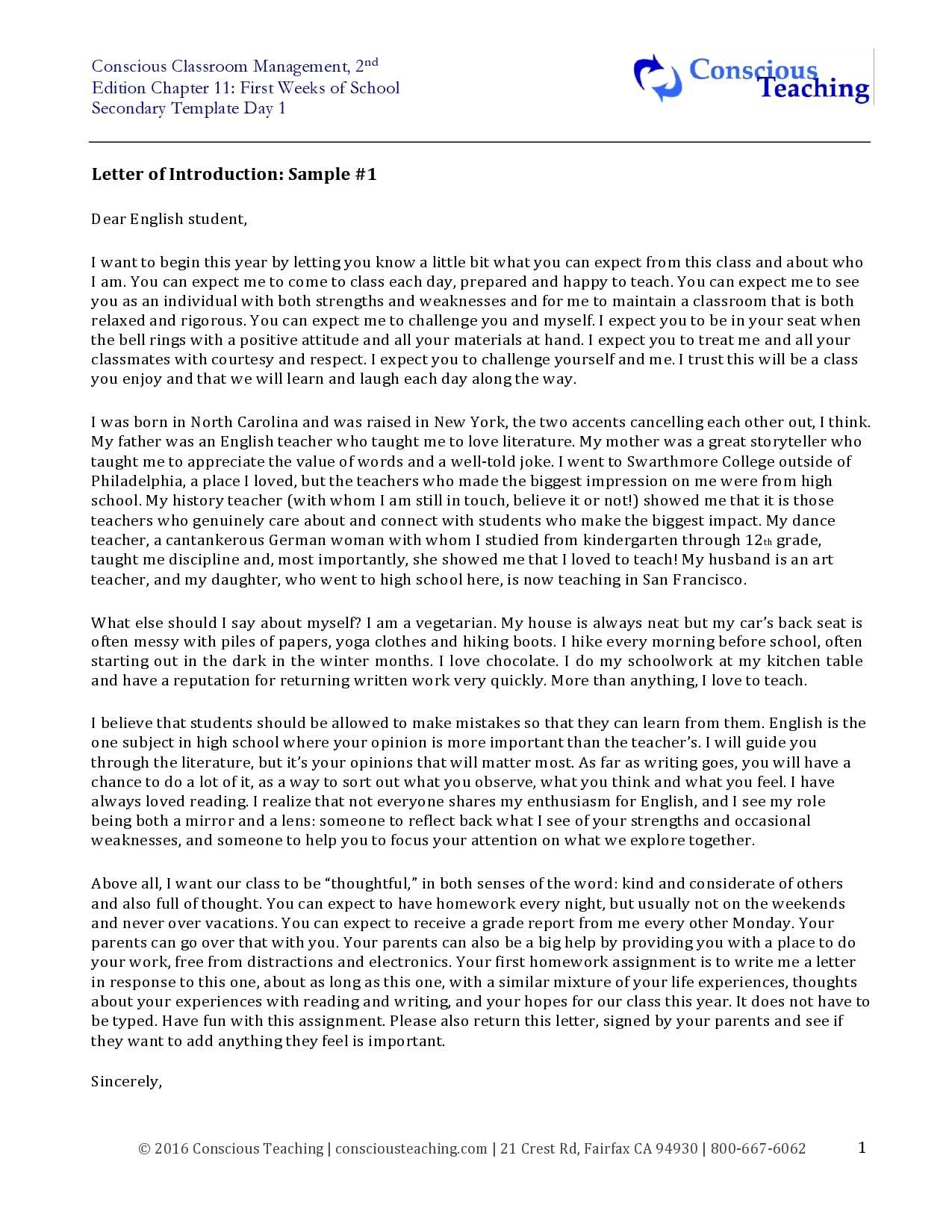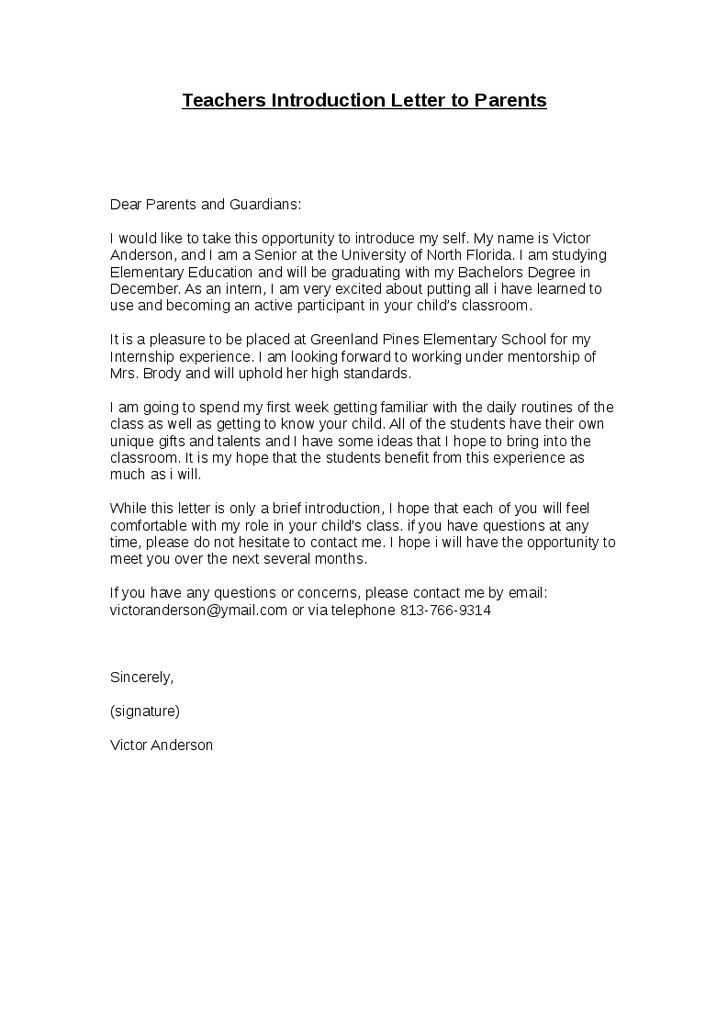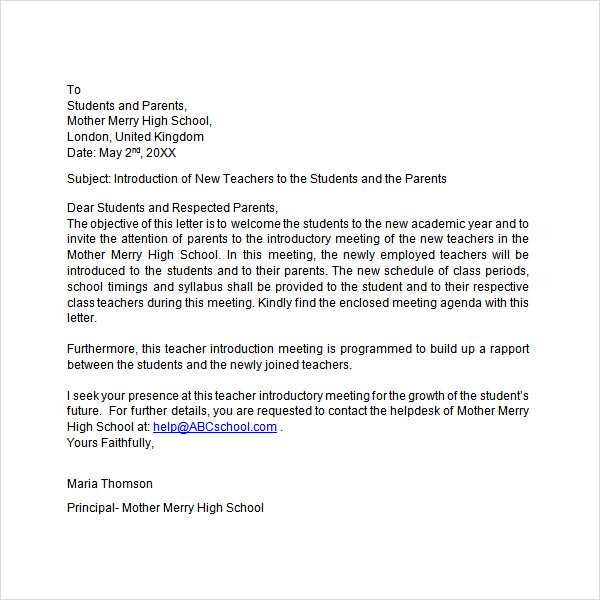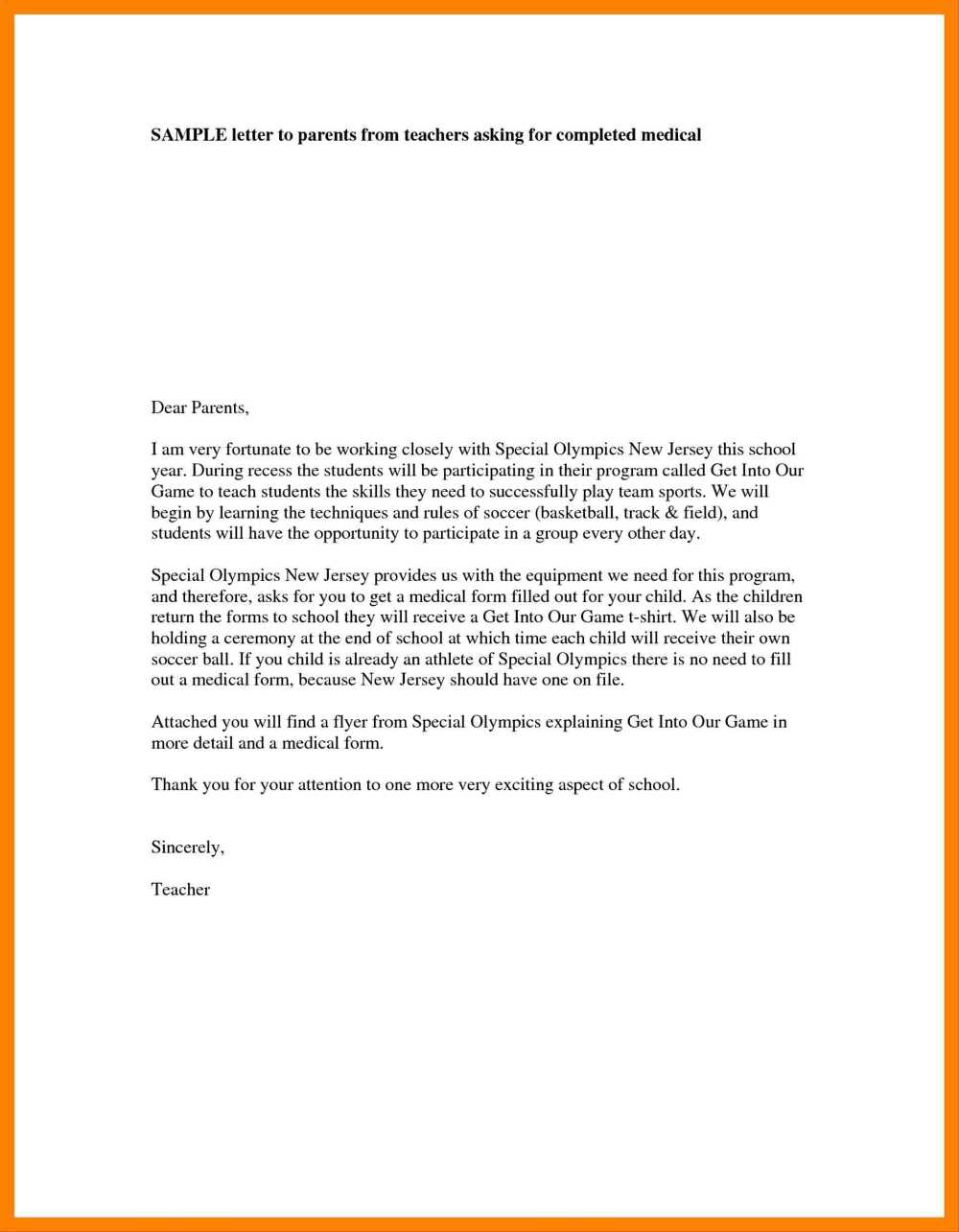Template for Teacher Introduction Letter to Parents

Establishing a connection with students’ families is an essential part of building a strong educational environment. One of the most effective ways to do so is through a personalized communication that sets a positive tone for the year ahead. This approach not only provides valuable information but also helps foster trust and collaboration between school and home.
A well-crafted message can make a lasting impression and show your dedication to the students’ growth. By thoughtfully introducing yourself and highlighting key expectations, you can pave the way for a successful partnership. In this section, we will explore how to create a meaningful and professional note that resonates with families.
Key Elements to Include in Your Letter

To create a strong and effective message, it’s important to include a few core components that will help establish clarity and build rapport. These elements ensure the communication is informative and sets the right tone for future interactions.
Start with a warm and welcoming opening that introduces yourself and conveys your enthusiasm for working with the students. Mention your role, background, and any relevant experience that will help families feel confident in your ability to guide their children. Make sure to emphasize your commitment to the students’ success and your eagerness to collaborate with their families.
Next, clearly outline your expectations and any important details about the upcoming term or year. This could include classroom routines, teaching strategies, and general guidelines for how parents can support their children’s learning. A well-organized message with these key pieces of information allows families to feel prepared and informed.
Finally, invite open communication. Encourage families to reach out with any questions or concerns, and let them know the best ways to contact you. Providing this reassurance helps foster a positive, collaborative relationship from the very start.
Best Practices for Writing a Teacher Letter
When crafting a message to families, it’s essential to ensure that the tone, structure, and content are clear and professional. Following certain best practices can help make your communication effective, thoughtful, and engaging for the readers.
First, maintain a friendly yet professional tone throughout the message. While it’s important to be approachable, the communication should also reflect the seriousness of your role in guiding students’ education. A balance between warmth and professionalism helps build trust and respect.
Clarity is key when conveying information. Avoid overly complex language and ensure that your points are straightforward. Using short paragraphs and bullet points can also help break up dense information, making it easier for families to read and understand. Focus on the most important details, such as key dates, expectations, and ways to stay in touch.
Lastly, always double-check for errors before sending the message. A well-proofread letter shows attention to detail and helps avoid any misunderstandings. Ensure that the message is free of grammatical mistakes and clearly communicates your intentions.
Common Mistakes to Avoid in Letters
When drafting a message to families, there are several pitfalls that can hinder the effectiveness of your communication. Avoiding these common mistakes can ensure that your message is clear, respectful, and professional.
Overloading with Information

One of the most common errors is including too much information in a single message. While it’s important to be informative, bombarding the reader with excessive details can make your message overwhelming. Focus on the key points and save additional information for follow-up communication or separate notices.
Using Too Formal or Casual Language

Striking the right balance in tone is crucial. Using overly formal or technical language can create a distance between you and your audience, while being too casual may come across as unprofessional. Aim for a tone that is approachable yet respectful, ensuring families feel comfortable while taking your message seriously.
By avoiding these mistakes, you can create a more impactful and positive connection with the families, ensuring that your communication is both effective and well-received.